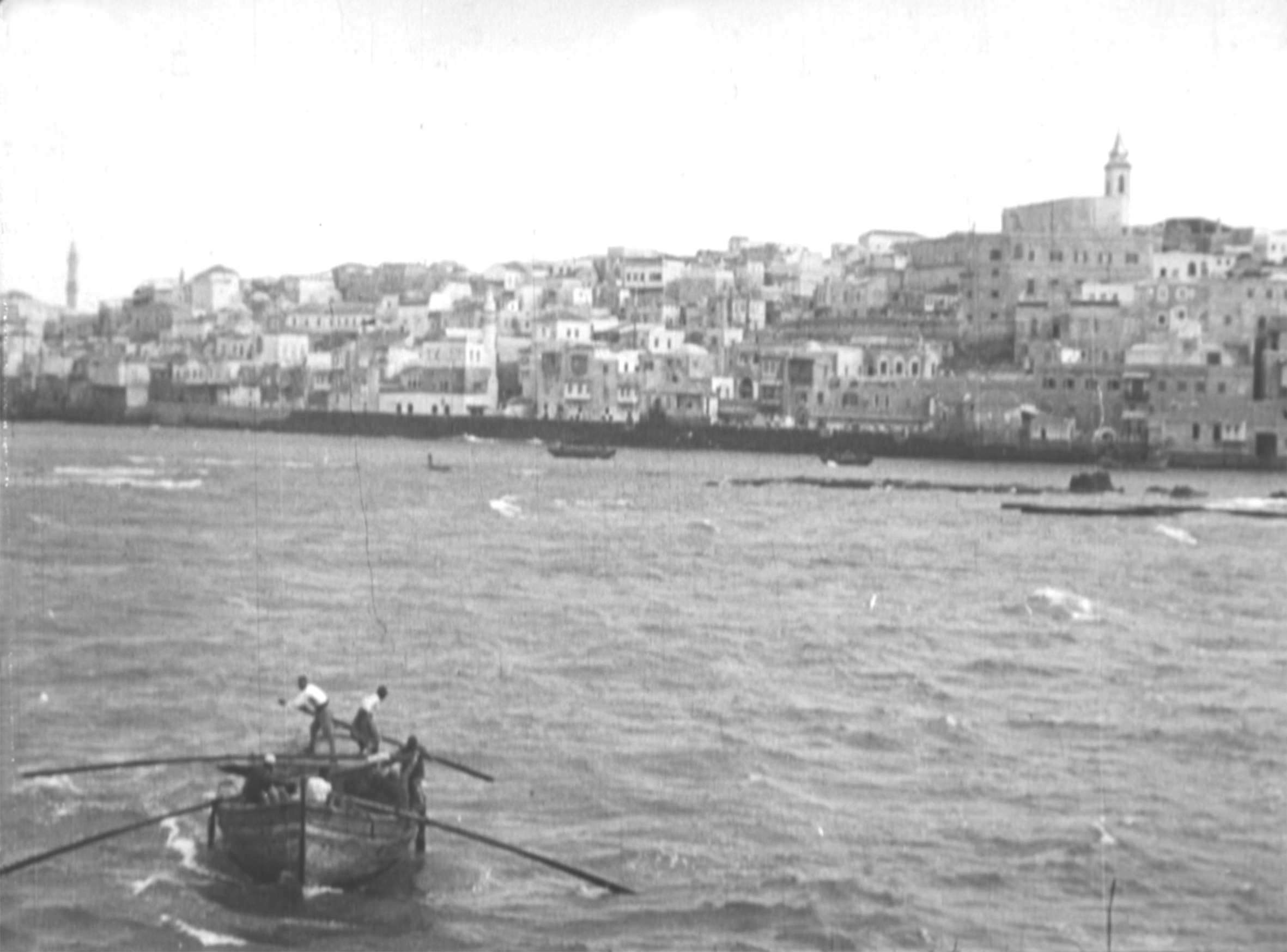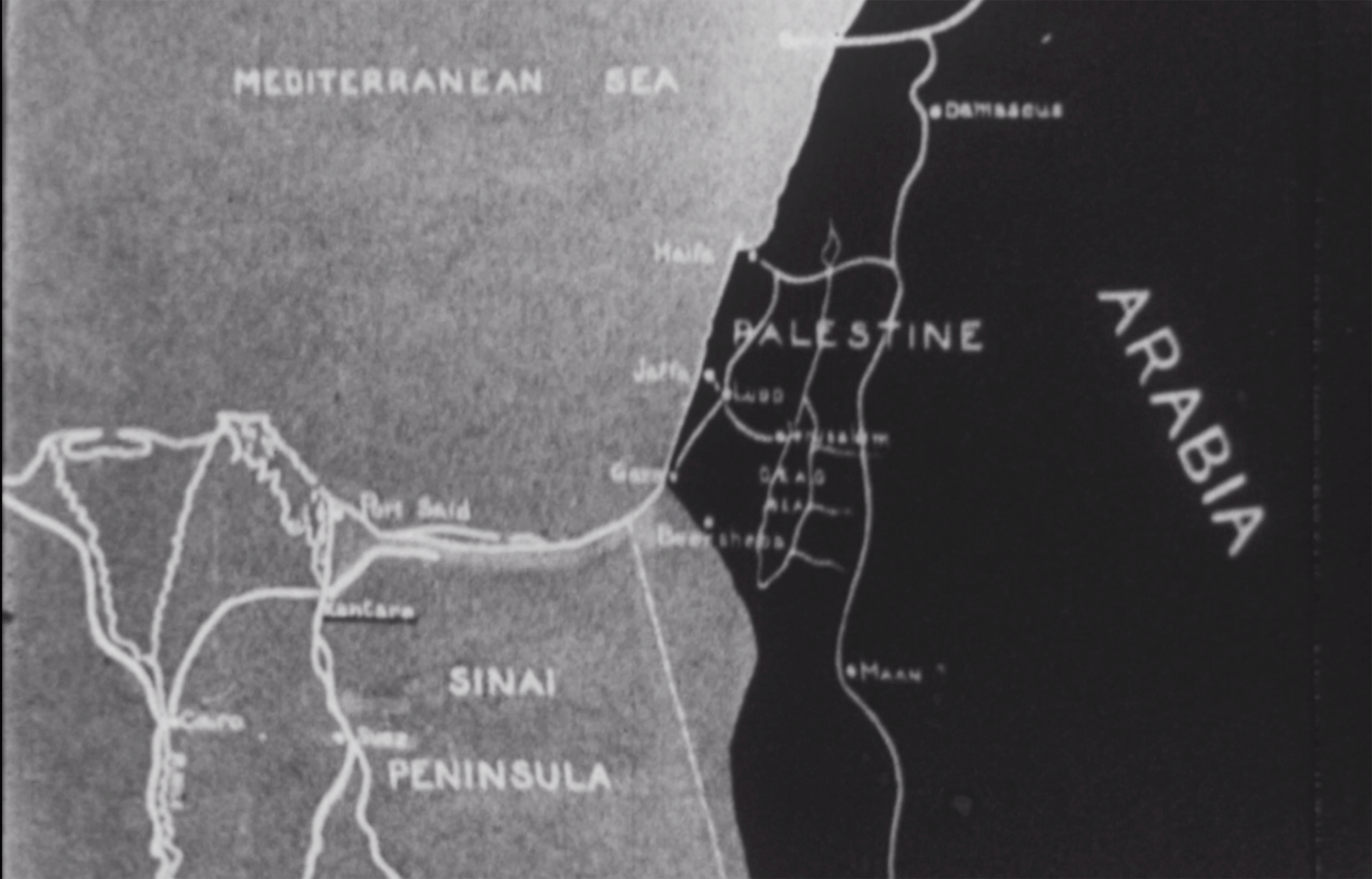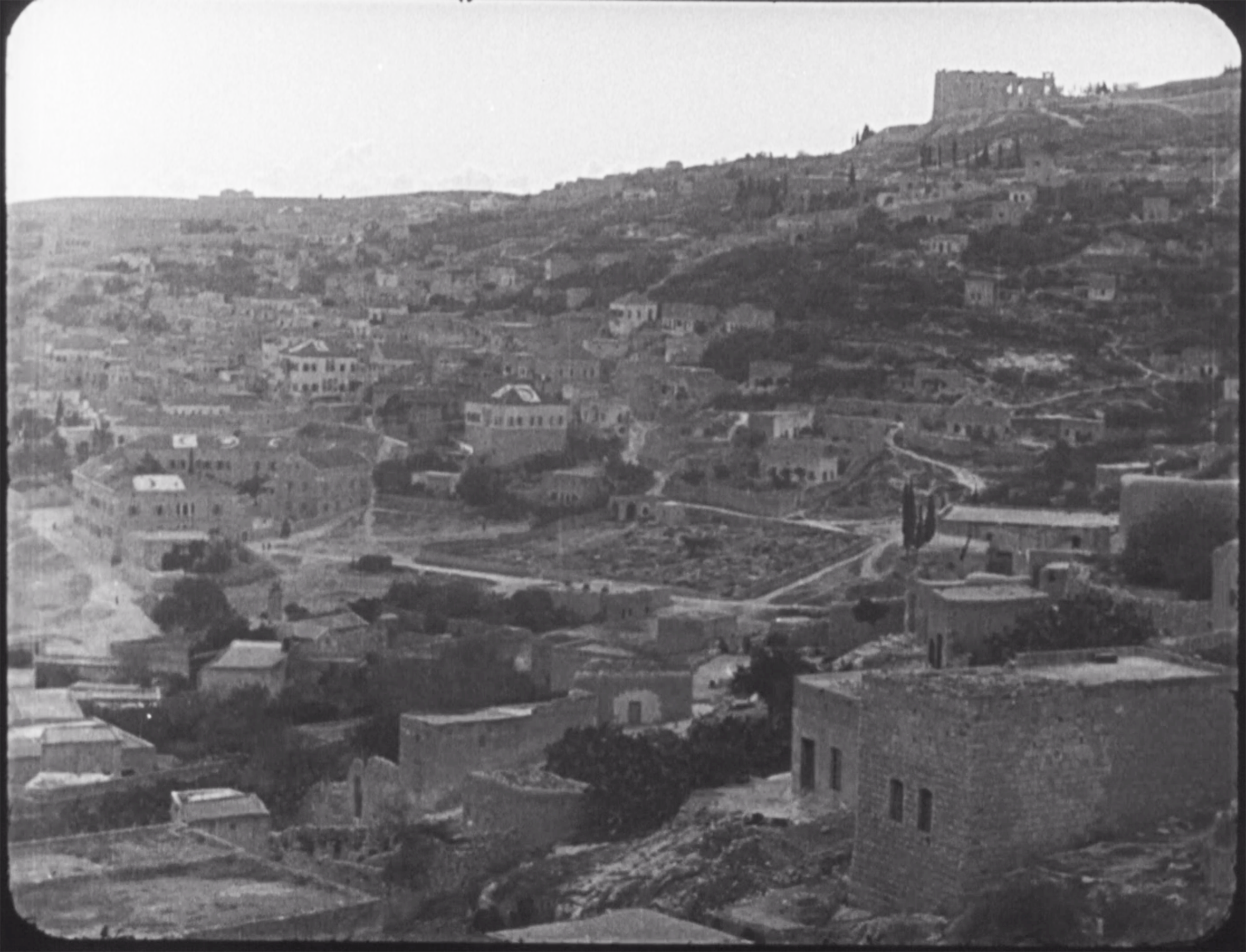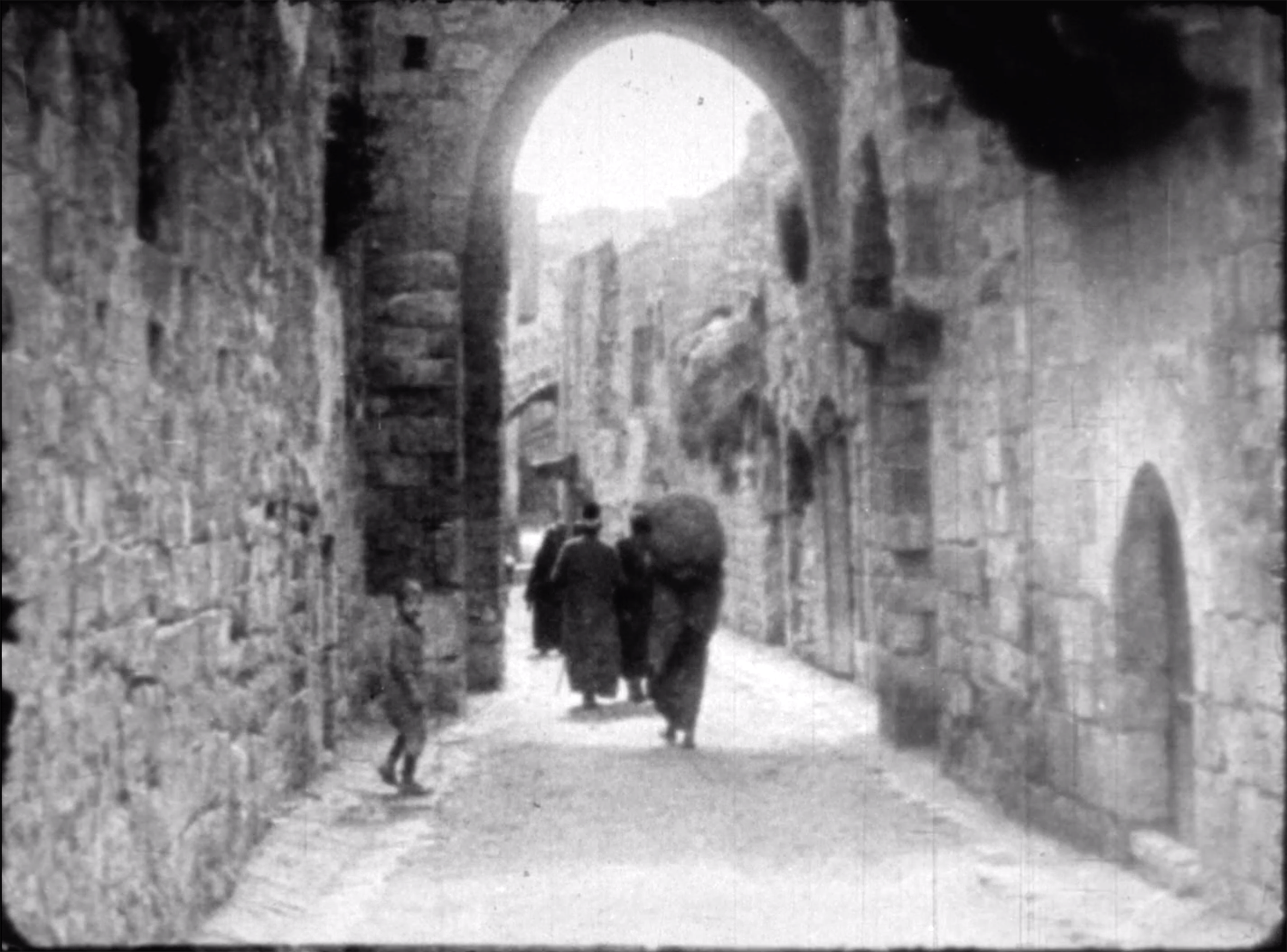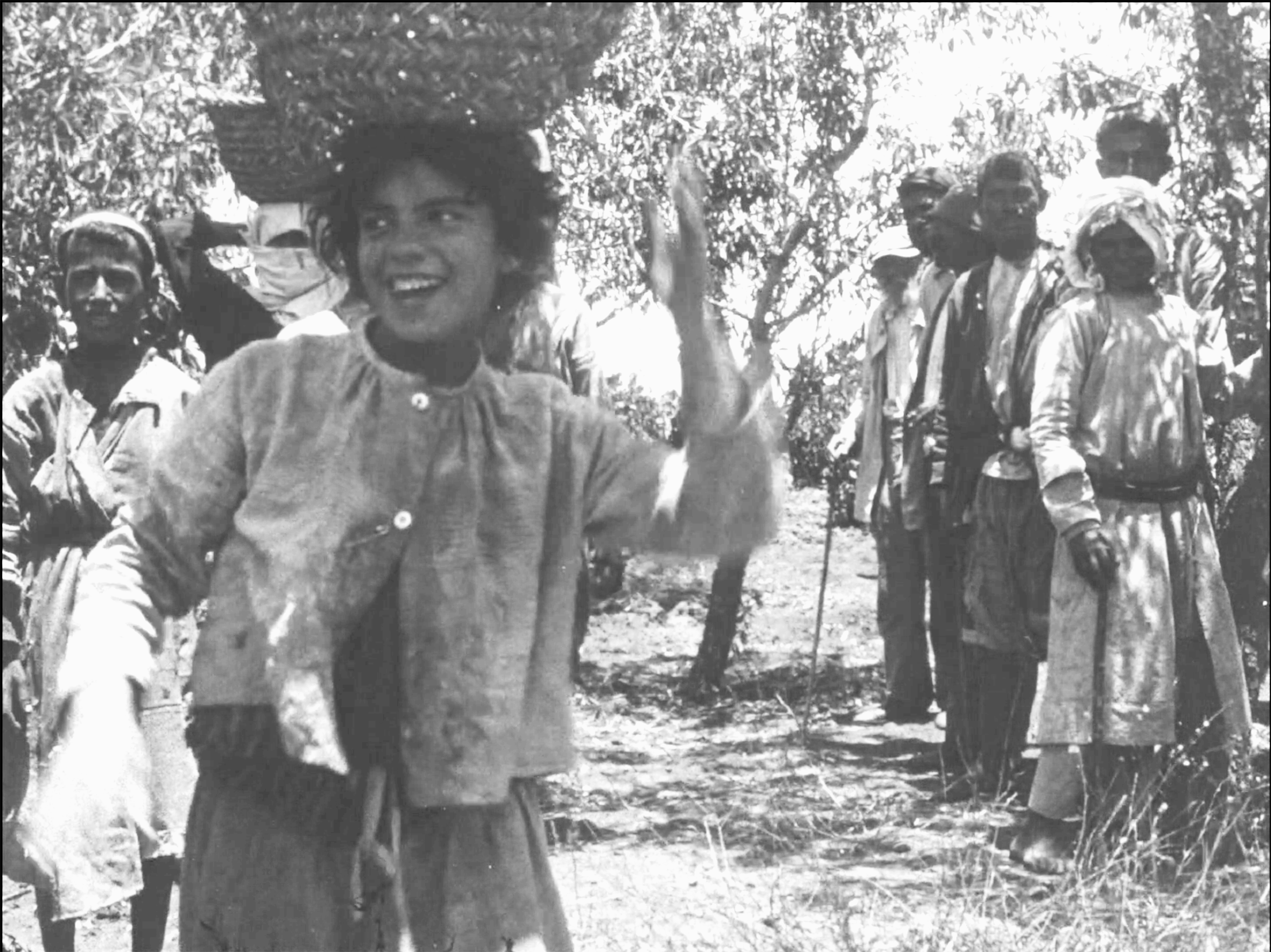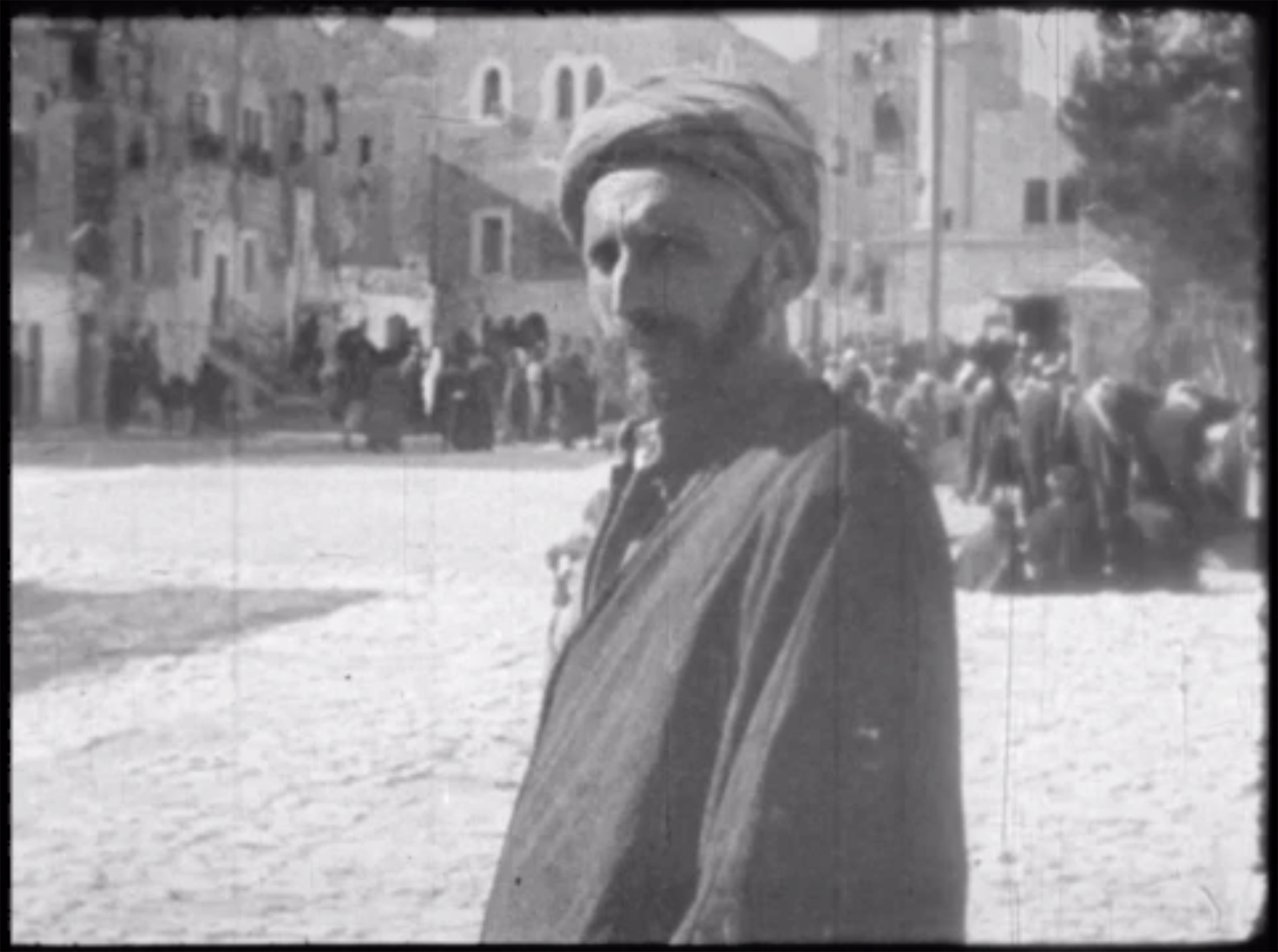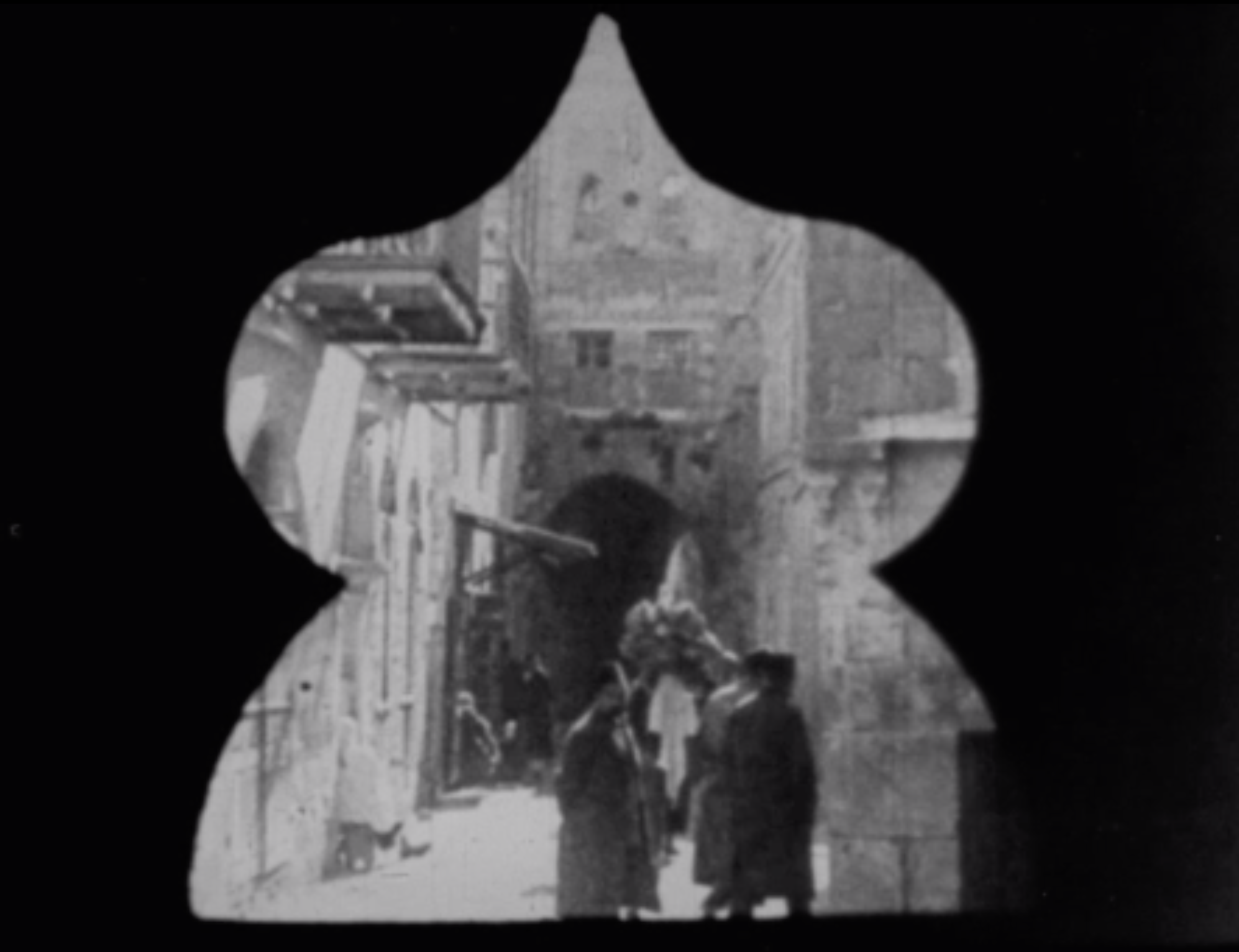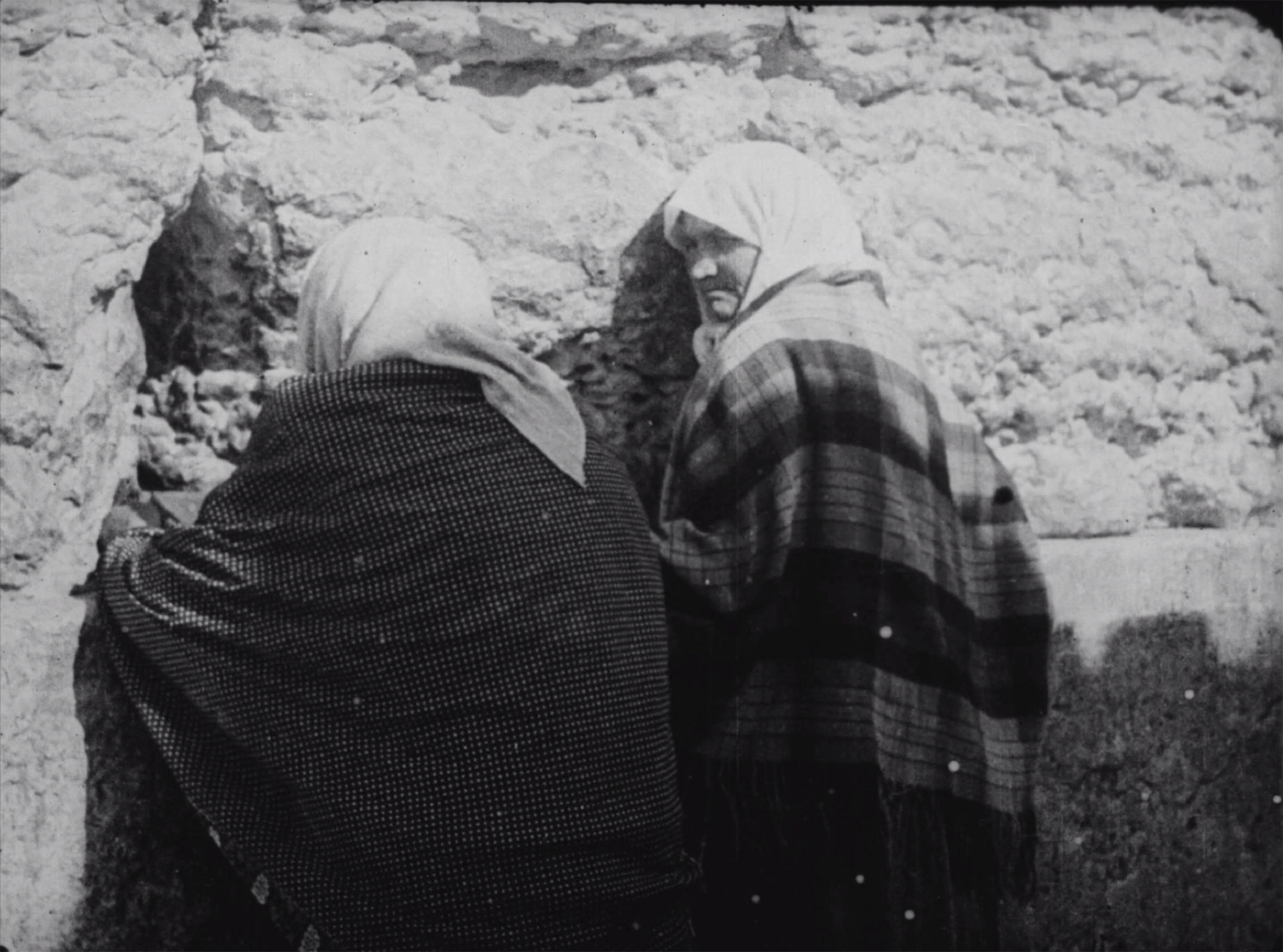Independent Works: Compositions, Performances, Improvisations
Selected Works
Cine concert (Alfilm festival, Berlin, 2024)
Accompanying live on prepared piano a film that I edited from 77 silent clips shot by British forces between 1914 and 1917 in Gaza, Nazareth, Bethlehem, Jerusalem, Jericho, Jaffa and Tulkarm, with Rana Eid's masterful sound design in a full house cine concert in Berlin, was definitely one of the most moving experiences ever.
Through our work in sound and music, we reflect on the British imperial narrative of this turning point in history, by placing it within the context of a century of events that followed the fall of the Ottoman Empire and the birth of nation-states in the Middle East.
Palestine, a revised narrative (30 min, 2024)
Sound design: Rana Eid
Editing, music and live music: Cynthia Zaven
Archival material: ©Imperial War Museums
Produced by: Alfilm Berlin
Sediments (Musikprotokoll, Graz, 2021)
String quartet commissioned by Musikprotokoll for the Danapris String Quartet
Violin I : Andrii Pavlov
Violin II: Antonii Kedrovskyi
Viola: Ihor Zavhorodnii
Cello: Viktor Rekalo
Danapris String Quartet © ORF musikprotokoll, Martin Gross
“Nul n’a jamais écrit ou peint, sculpté, modelé, construit, inventé, que pour sortir en fait de l’enfer.” Nobody ever wrote or painted, sculpted, modeled, built, invented, for any reason other than to exit from hell, says Antonin Artaud.
As the worst economic crisis in history continues to unravel in Lebanon, and the explosion of August 4, 2020 – the largest in a metropolitan area since WWII – left half of my city destroyed, I search for sediments to parse through the emotional cobweb that such a disaster has engendered.
The composition was commissioned by ORF musikprotokoll with the support of the Ukrainian Institute.
Click here to know more about the Musikprotokoll 2021 program.
12 Districts (Frankfurt Lab, 2021)
in collaboration with Ensemble Modern
Graphic Score 1 - Starting with trombone
The map of Beirut as a space for experimentation.
The 12 musicians (11 from the Ensemble Modern and me on the piano) are positioned on stage according to the 12 districts of Beirut. And like any Beiruti citizen, each musician will have to negotiate their way through aleatoric (sonic/musical) decisions, creating in the process a real-time composition within the framework of the map. The opening and ending theme on the piano remain the same; But rather than suggesting a definitive representation of a piece, 12 Districts will be different each time it is performed, like an ever changing city soundscape where the social and cultural fabric constantly reinvents itself despite all the odds.
To know more about the performances with Ensemble Modern, please click here
Fractal (Beirut Art Center, 2021)
Fractal is a composition which sounds entirely consist of recordings made with metallic, plastic, wooden tools and paper on the internal metallic bridge of Beirut Art Center, in the framework of Micro-commissions no. 4: The Bridge Cuts Ever So Close to My Balcony
To know more about the micro commissions, please click here
Madrigal d’Essilio (Eclat Festival for New Music, Stuttgart, 2021)
Commissioned by the Neue Vocalsolisten
On February 3rd 2021, Madrigal D’Essilio, my composition for the 6 incredible voices of the Neue Vocalsolisten opened the Eclat Festival for new Music in Stuttgart. Due to Covid restrictions, the entire festival was broadcast online from the Stuttgart Theaterhaus. The program will be performed again in August at the Akademie der Künste in Berlin, as well as at the Internationales Musikinstitut in Darmstadt.
Mezzo soprano Truike van der Poel
Martin Nagy, left, Guillermo Anzorena and Andreas Fischer
Soprano Joana Vargas
All photos by Martin Sigmund
To know more about the program, please click here
To know more about the Eclat festival, please click here
To know more about the Neue Vocalsolisten, please click here
Performance with cellF (Ars Electronica, Linz, 2017)
Guy Ben-Ary (AU), Nathan Thompson (AU), Andrew Fitch (AU), Darren Moore (AU), Stuart Hodgetts (AU), Mike Edel (AU), Douglas akkum (US)
cellF is Guy Ben-Ary's self-portrait but also the world’s first neural synthesizer. cellF’s “brain” is made of a living neural network that grows in a Petri dish and controls analog synthesizers that work in synergy with the neural network in real time. The performance generated an interaction with the sounds of cellF as it responded to my improvisations on the piano.
Photo by Guy Ben-Ary
Photo by Florian Voggeneder
To learn more about cellF, check the ars electronica website here
Morse Code Composition (Soundworks, ICA London, 2012)
For flute, accordion and electronics
Institute of Contemporary Arts London
"... And that sin and love and fear are just sounds that people who never sinned nor loved nor feared have for what they never had and cannot have until they forgot the words." William Faulkner
.- -. -.. / - .... .- - / ... .. -. / .- -. -.. / .-.. --- ...- . / .- -. -.. / ..-. . .- .-. / .- .-. . / .--- ..- ... - / ... --- ..- -. -.. ... / - .... .- - / .--. . --- .--. .-.. . / .-- .... --- / -. . ...- . .-. / ... .. -. -. . -.. / -. --- .-. / .-.. --- ...- . -.. / -. --- .-. / ..-. . .- .-. . -.. / .... .- ...- . / ..-. --- .-. / .-- .... .- - / - .... . -.-- / -. . ...- . .-. / .... .- -.. / .- -. -.. / -.-. .- -. -. --- - / .... .- ...- . / ..- -. - .. .-.. / - .... . -.-- / ..-. --- .-. --. --- - / - .... . / .-- --- .-. -.. ... / .-.-.-
Writing music as a way to transfer a situation from mind to paper. To get rid of a torment, a moment, extract it from time, place it somewhere else and let others do whatever they want with it. Interpret it, manipulate it, improvise on it. The reason to notate the score for accordion and flute was to repeat the musical experience at a later time, and evaluate the process of emotional memory in regards to particular events.
Months later, time had turned me into an outsider to the situation that made me write the piece in the first place; It was out there being performed by two total strangers in a public event. The only evidence of the moment ever having existed somehow, were the two foreign musicians as protagonists, the audience as a witness and the musical score and recording as lasting documents.
Musicians/improvisers:
Flute: Alessandra Rombolà
Accordion: Esteban Algora
3 Short Improvised Pieces For 3 Prepared Pianos (Irtijal Festival, 2012)
Excerpts from rehearsals for the April 11th performance at Masrah Al Madina
Pianos:
Dušica Cajlan Wissel
Magda Mayas
Cynthia Zaven
Lullaby For Traffic (2012)
Multitrack improvisation on piano | Published on 12" vinyl
This collection of sounds started from a series of conversations with cross-generational contemporaries and mentors - specifically around the art of sampling and how each contributing artist uniquely approaches sampling in their practice. Artists were commissioned to make works that incorporate an existing recording that was meaningful to them in some way, in order to create a dialogue between their practices and around the very culture of sampling itself. The resulting compositions range from more intimate autobiographical references to over-arching archival systems exposing the politics of listening. Here, defamiliarized appropriations of past sound events become universal and future in their scope - from Joe Namy's (a(version)s)
Sextet at Ler Devagar (LX Factory, Lisbon, 2010)
Excerpt from the free improvisation music performance at Lx factory in Lisbon (Dec, 2010)
Ernesto Rodrigues, viola
Guilherme Rodrigues, cello
Nuno Torres, alto sax
Eduardo Chagas, trombone
Cynthia Zaven, piano
Ricardo Guerreiro, electronics
A Minefield Walk & A Minefield Bicycle Ride (Banja Luka, 2010)
Banja Luka, Bosnia and Herzegovina
In search of new ways to explore power, religion and identity through art, Sebastian Meissner and Serhat Karakayali invited six musicians from the Middle East and the former Yugoslavia (Manja Ristic, Dror Feiler, Asmir Sabic, Boikutt, Sharif Sehnaoui, Cynthia Zaven) to a one-week ArtLab in Banja Luka (Bosnia and Herzegovina), jointly elaborating and developing a psycho-geographical score that critically describes the mesh of relationships between the two regions and Western Europe expressed through symbolicism, music and sound.
My contribution to this project resulted in A Minefield Walk, and in collaboration with Sharif Sehnaoui (guitar), A Minefield Bicycle Ride, both improvised pieces that explore psychological repercussions of a landscape dotted with one millions land mines to this day. These landscapes attempt to burrow into the emotional undercurrents of landscapes that have indelibly shaped European contemporary history.
The idea for this workshop originates in the "Lost Spaces" project which focused on the history, the destruction and reconstruction of the Ferhadija mosque in Banja Luka. At that time the project was a reaction to a widespread curatorial practice, namely to invite musicians from the Near East to participate as peace ambassadors at European art & music festivals – a practice that ignores the role Europe plays in this conflict. "Not by Note" is a continuation of that project insofar as musicians from this region were invited to reverse the perspective and look at a part of Europe that is as "Balkan" as it is at times expatriated from Western civilization.
The project was presented at Kunstmuseum Graz during ORF musikprotokoll at Steirischer Herbst 2010 as a sound-video-graphic installation and an on-site-on-air-on-line ORF Kunstradio broadcast when all those involved in the project once again came together in virtual space.
The project Not By Note received an Honorary Mention at Ars Electronica in 2011.
To learn more bout the Not By Note project please click here
Conca, Dorner, Meyer, Zaven (Irtijal Festival 2010)
Sabina Meyer, voice
Axel Dörner, trumpet
Paed Conca, electric bass
Cynthia Zaven, piano
2 excerpts from the free improvisation music performance at Irtijal Festival (April, 2010)
Untuned Piano Concerto With Delhi Traffic Orchestra (New Delhi, 2006)
Excerpt from piano improvisations on the back of a truck driving through New Delhi | Published on 12" vinyl
One day before my performance, a young Lebanese minister was killed in Beirut; it was part of the long parade of political assassinations that had started with PM Hariri in Feb 2005. I decided not to tune the piano. It suited perfectly with the chaos of the city I was in (Delhi) and the city I was from (Beirut). A different chaos, but one nevertheless. I had taken the piano out of its normal 'habitat' therefore de-contextualizing an ordinary setting, and was using it to interact with a city that was not mine in a language I knew best. We drove around the busy roads of Delhi with me sitting in the back improvising on the piano, challenging the instrument to connect with the urban environment, almost like trying to fit in a place I didn't belong to. Some drivers would beep back, some would just stare in awe thinking it was a movie that was being shot. Feeling the instrument turn into a purely sonic interface to communicate with cars, rikshaws and trucks was both an intense and painful experiment... and after 2 hours on tortuous roads, the soundboard disconnected from the piano that eventually gave up.
Check out excerpts from the performance in the ‘videos’ section
Klangturm Concert (Biel, 2002)
Excerpt from the 72-channel piano improvisation concert with Andres Bosshard (live electronics), Biel, Switzerland
The tower designed by Austrian architectural studio Coop Himmelb(l)au for the Swiss Expo, an event that occurs once every 25 years, was the supporting beam for an interactive musical instrument. A unique audio system comprised of 72 physical channels and over 40 loudspeakers produced a virtual acoustic kaleidoscope. Vertical whirls acted as background for the projection of the most varied sound experiences. The sound stream was based on a weekly composition which reacted to the environment on seven different aural levels and could be altered and structured live by musicians.
I was invited to perform inside the tower during the Swiss Expo in August 2002, in collaboration with the initiator of the project, Andres Bosshard (live electronics). The sound tower's shell, open at the top, concealed more loudspeakers. Microphones caught the hum and murmur of the crowd along with the music performed on the piano and relayed them to the sound direction capsule, hung at about three meters height, where Andres would direct and alter the mix of sounds, before transmitting them on 72 channels.
For more information about the Klangturm architecture please click here
